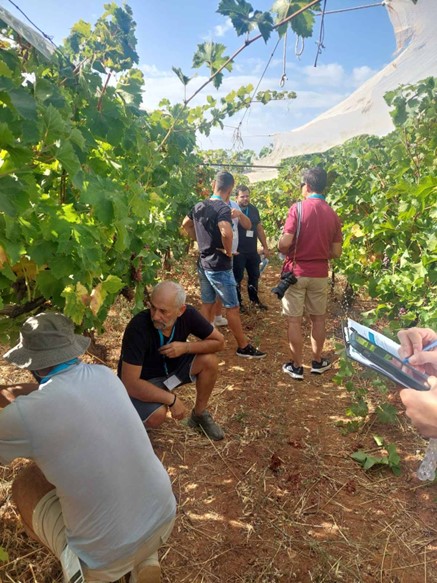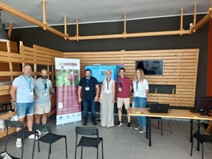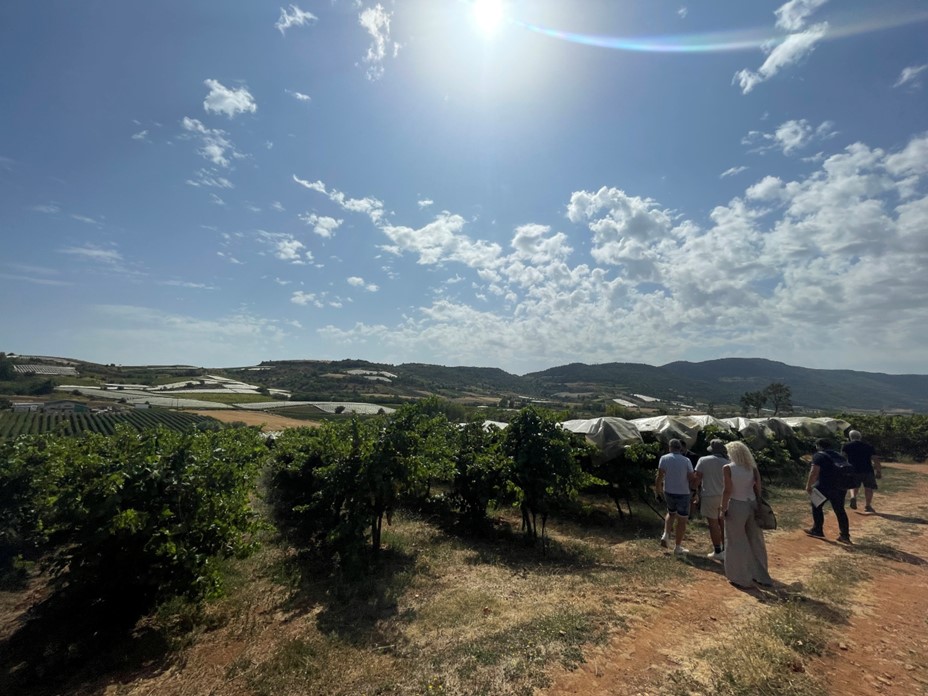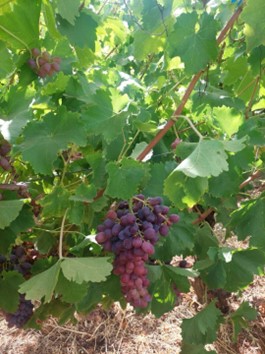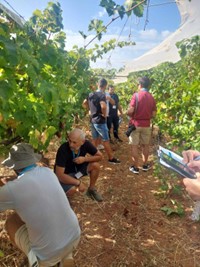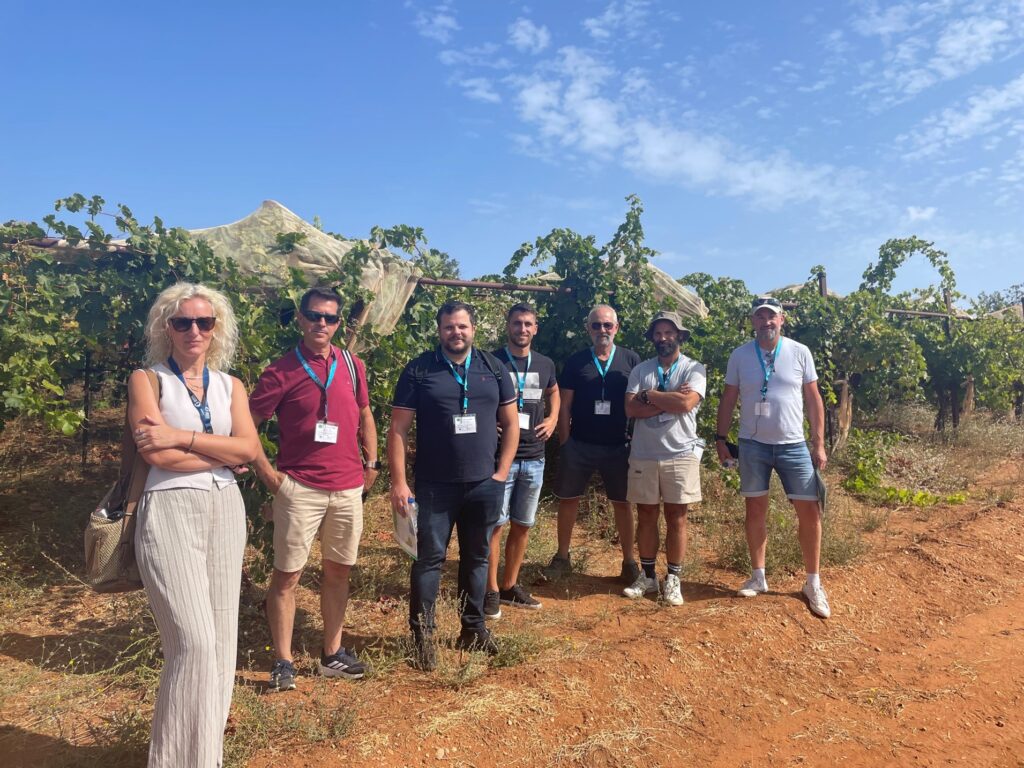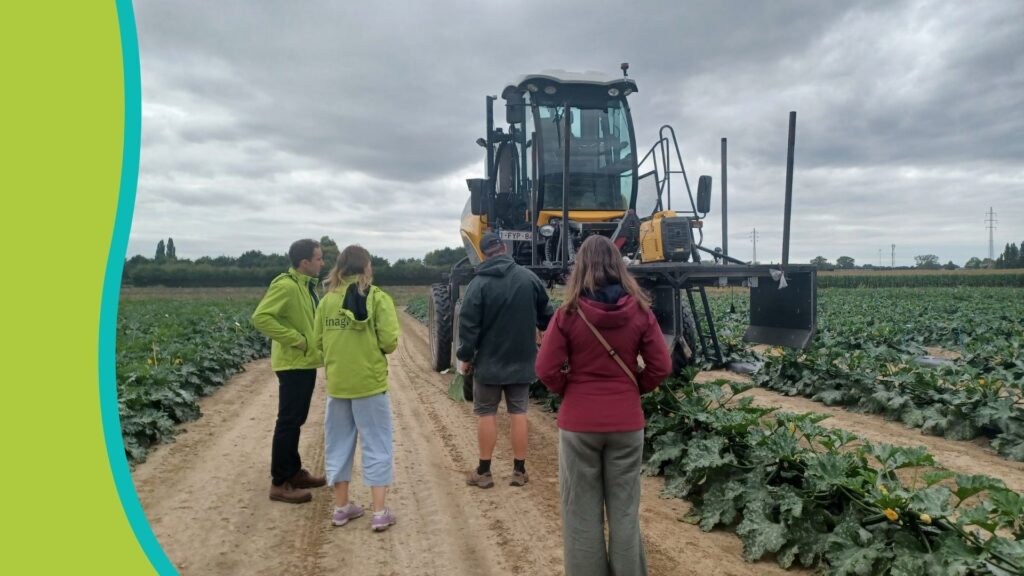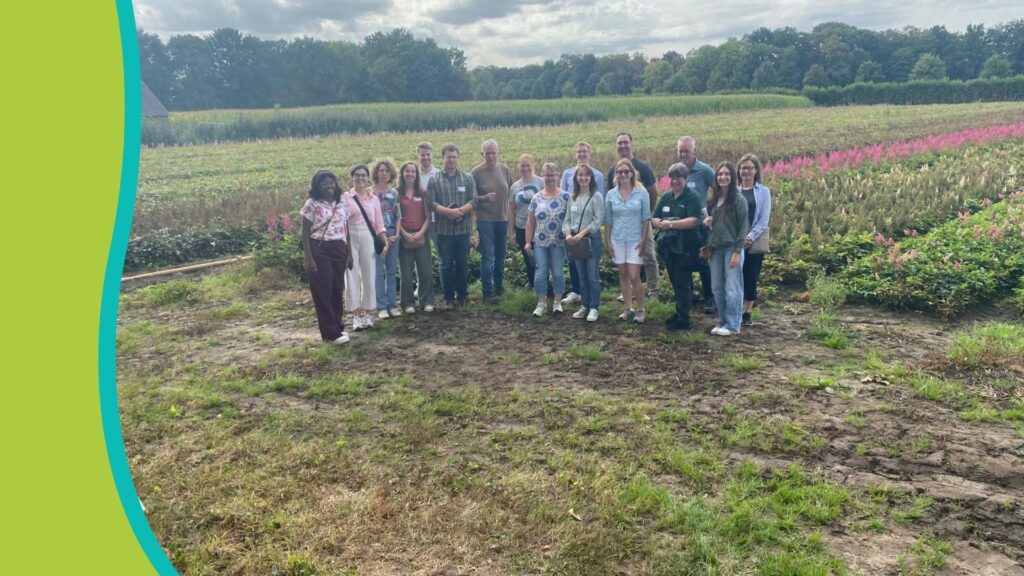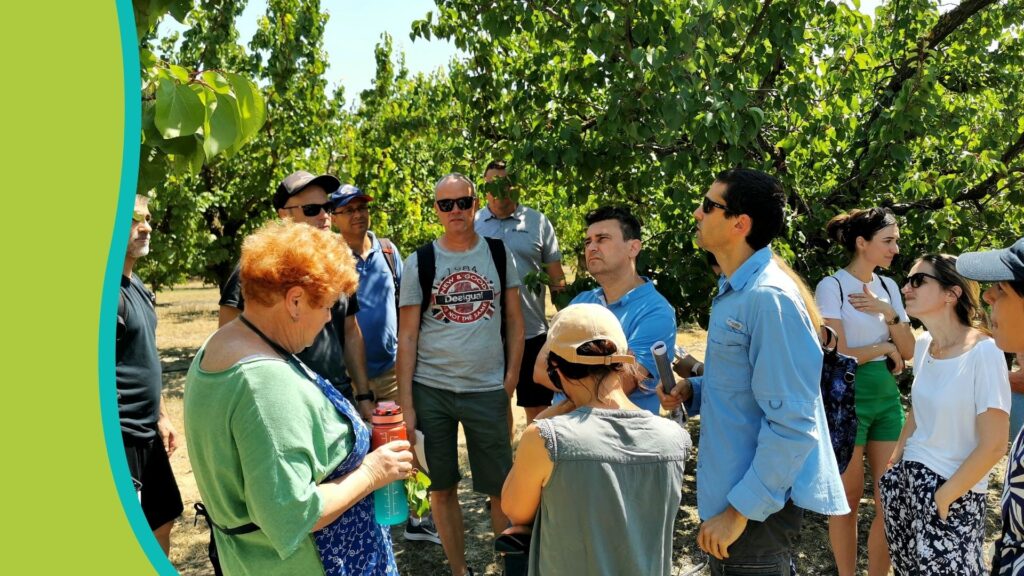Introduction to the Visit
The cross-visit gathered a small but engaged group of four participants from Spain, Croatia, and France, who travelled to Greece to learn about the Bio Crimson approach. Hosted by GAIA on 11 September 2025, the visit centred on the vineyard of Spiros Karachalios, located in Velina in the Korinthos region. The farm stretches over two hectares and is dedicated to Crimson Seedless table grapes, cultivated at relatively high altitude on acidic, red soils with a pH of about 5.5. Although the area is generally dry, the vineyard occasionally faces hailstorms, sudden temperature drops, and the ongoing challenge of Esca infections.
Understanding the Novel Approach
The Bio Crimson approach, developed around the use of specific biostimulants, offers a structured way to support plant health and fruit quality. Its implementation depends on close collaboration with agronomists who adjust the timing and dosage of applications according to climate, seasonal demands, and the particular needs of each vineyard. At Spiros Karachalios’ farm, the applications were carried out by Spiros himself with the help of one additional person. Access to key biostimulant products—laminarin, humic and fulvic acids, and Ascophyllum nodosum extracts—was essential for the programme.
Implementation and Challenges
No major difficulties emerged during implementation, although some technical adjustments were occasionally required. Vineyard size, weather conditions, and annual variability influenced the precise timing and dosage of applications, but these challenges were easily navigated with the support of agronomists. The approach required no modifications to infrastructure or equipment, and no specialised training was necessary beyond guidance on correct application methods.
Results and Observed Benefits
The outcomes at Spiros Karachalios’ vineyard were clearly positive. The vines demonstrated stronger physiological condition, with more vibrant green leaves and larger, healthier foliage. Fruit quality improved significantly: berries showed enhanced uniformity, better colour and composition, reduced cracking, and an overall increase in size and visual appeal. No negative impacts were reported, and no major modifications were considered necessary for future seasons apart from adapting protocols to annual climatic changes.
Advice from the Host and Advisors
Spiros encouraged other growers to introduce the Bio Crimson approach in close collaboration with agronomists and to remain aware of the higher costs associated with biostimulants. Maintaining a balance between effectiveness and cost-efficiency was, in his view, essential for long-term adoption. Advisors participating in the visit emphasised the value of scientific validation, recommending small on-farm trials to evaluate performance under different local conditions. They also noted the role of advisory services, cooperatives, and market access in supporting successful implementation.
Highlights of the Experience
A highlight of the cross-visit was the strong sense of connection among participants. Their discussions were lively, sincere, and grounded in a shared interest in improving grape production through innovative, nature-based approaches. The positive atmosphere extended into the evening, where a friendly social dinner helped deepen the exchange and strengthen the collaborative spirit of the group.
